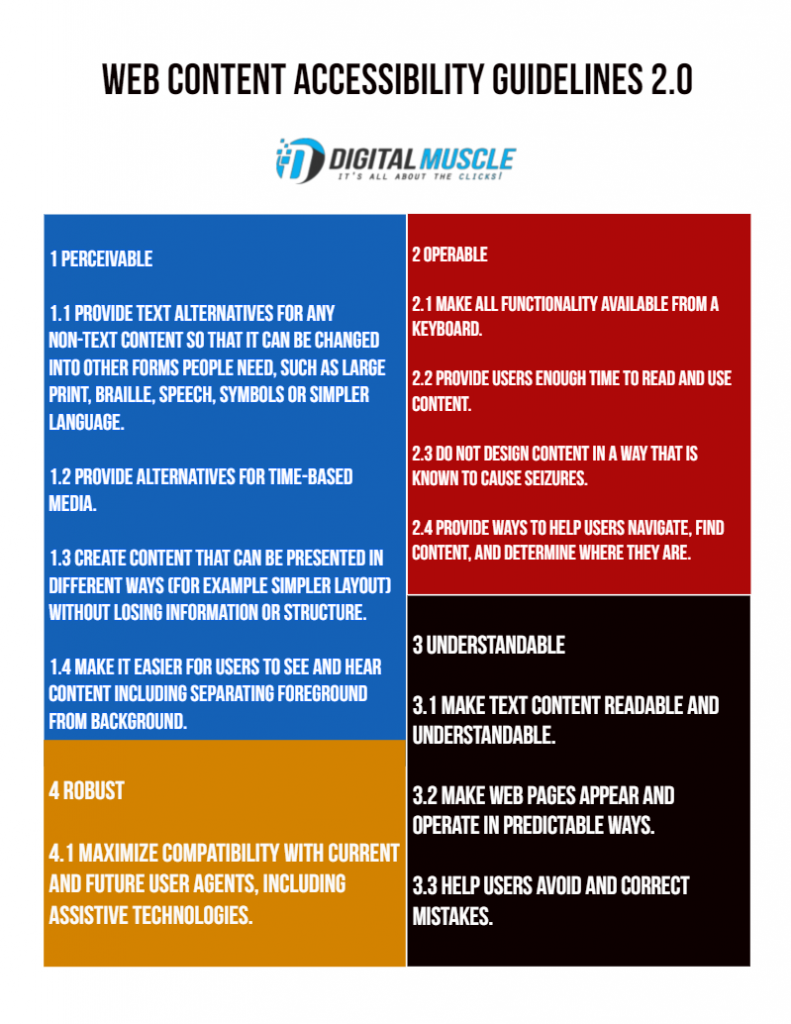The Internet's power is currently at its peak. Like a labyrinth with no end in sight, its breads and depths and heights are almost immeasurable. There is no knowing how far you can access the web. Indeed, having this information superhighway has made a huge difference in our day to day.
And this brings us to our main point: the importance of web accessibility.
Talking about the Internet is like introducing yourself no holds bar. We can see the benefits of cyberspace and easily accessible information on one hand and the pitfalls of too much information on the other.
Although we can laud our beginning, because we have come a long way from when we started and cyberspace is a walking proof of our progress, not many web owners understand the importance of web accessibility. Furthermore, it seems like there is a need for more awareness on this issue.
These days web owners and businesses create websites anchored on accessibility to attract more customers, business partners and industry allies. But what exactly is accessibility and how can you use it to achieve your business goals?
Web Accessibility In Context

The principle behind web accessibility stems from the universal belief that the World Wide Web was invented for the benefit of everyone – regardless of social hierarchy or mental or physical capacity. If the Web is able to bring everyone together no matter who or where they are, it is by and large accessible.
As the Internet expands and grows to indefinite proportions, accessibility in website design has become a necessity. People search the Web for helpful websites and websites that fail to satisfy their information needs hardly generate any traffic.
But now that a great number of websites have started doing content marketing and SEO to address information gaps and satisfy visitors, another issue comes to the fore.
Many devices and websites were originally designed for able-bodied users. But conscious advocates of persons with disabilities are now lobbying for a more inclusive form of web communication and interaction.
Accessibility in website design essentially means creating a website that easy to navigate and informative for all users. Meaning, including users with cognitive, auditory, physical, speech or visual impairment.
Why is Accessibility in Website Design Important?
Different organisations are subjects to different accessibility standards. It differs from one organisation to another, depending on the nature of your website and the laws of your country of origin.
The Australian Government advocates for web accessibility through the Disability Discrimination Act 1992. The national government website emphasises the importance of accessible web designs, which “ensure information and services are provided in a non-discriminatory accessible manner.”
According to the World Bank, “one billion people, or 15% of the world’s population, experience some form of disability.” Moreover, such disability is higher among developing countries with alarming poverty rates.
How many persons with disabilities are internet users? How many of them are likely to do their research or buy a product online?
On a positive note, there has been increasing awareness of disability-inclusive development. And now, web masters and web owners are raising the banner of inclusiveness through accessible web designs.
Awareness of ethical and inclusive web development also comes in the heels of W3C's Web Content Accessibility Guidelines (WCAG) 2.0. Recommended since 2008, WCAG 2.0 teaches developers and webmasters how to code websites for everyone – especially persons with disabilities.
In addition, W3C guide suggests special technology and coding techniques that can make any website accessible to special users. It also zooms in on four main areas of responsibility through which webmasters should develop an accessible website.
See the accessibility criteria below:

Social responsibility aside, web accessibility is a ranking factor. Search engines tend to favour websites with enhanced accessibility features. This is because their algorithms have no trouble finding such websites. They load fast, have easy to crawl content and can be discovered via voice search and other search algorithms.
How to Increase Your Website's Accessibility Features
There is no one-size-fits-all approach for increasing your website's accessibility features. However, you can have a rough sketch of where to start. Because there's always a starting point.
Take note that accessibility is a broad spectrum. It's wise to focus on what you can handle first. And once you acquire a better understanding of your company's needs, you can start adopting more advanced features along the way,
Below are simple methods for increasing your website accessibility:
1. Use contrasting colours for website for individuals with eyesight problems
2. Avoid small fonts so that customers, regardless of vision health, can read your web content
3. Add ALT text to all your images so that search engines and text-to-speech algorithms for the visually impaired can read them
4. Make sure your website has an internal search function with a voice search option
5. Get rid of CAPTCHA – this anti-spam feature is not friendly to the visually and hearing impaired
6. Instruct your developer to install text-to-speech technology on all your web pages
7. Compress images, videos and other heavy documents so your site will load quickly
8. Adopt a responsive design or theme so your website can be read on any device and any browser
9. If you have a physical office, always add a map that guides visitors to your business location
Reliable and Ethical SEO Company in Australia
Web accessibility is not just a growing trend for websites and online businesses. It's a responsibility all web owners must take on in the name of long term growth and for the benefit of their target clients, some of whom may have a disability.
Is your website accessible to everyone? Can first-time visitors easily find their way around your website? Does it load fast?
For burning questions about web accessibility, head over to https://www.digital-muscle.com.au/. And if you think it's better to let the pros handle your accessibility problems, then feel free to contact us. We will help you identify areas for improvement so you can build your strengths and develop an inclusive website that's friendly to all users.




